Eva Took Her Hainting to be Framed and Received an Offer to Hold a Solo Exhibition
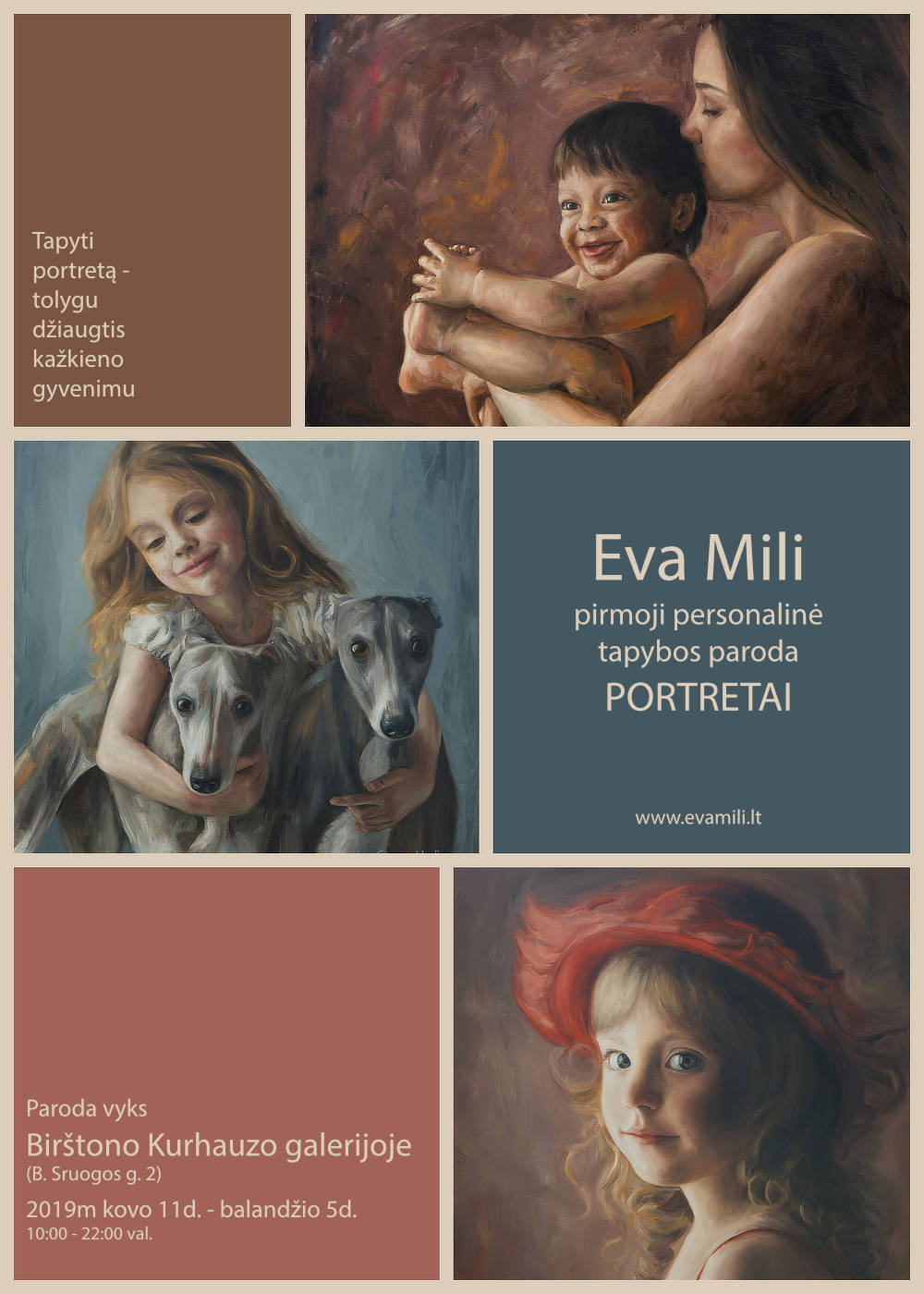 Aušra Filipavičiūtė-Navikauskė
Aušra Filipavičiūtė-Navikauskė
April 2019A couple of years ago, during her daughter’s birthday, Eva stood by an easel and felt the joy of painting. With no artists around her, she began to explore on her own. In nearly two years, this self-taught artist from Kaunas had created several paintings. After framing a few of them… that was enough to receive an offer to present her works publicly.
All this happened in January of this year, and just a few months later, 24 of Eva Miliūnienė-Mili’s paintings were hanging in a bright and cozy space – the Birštonas Kurhaus Gallery. The story gets even more interesting because she has a degree in computer science, worked as a programmer, but turned to the artistic path after going on maternity leave. She picked up a camera and… never returned to the company where she was a programmer after maternity leave. She worked as a photographer for 10 years, capturing images of babies and children, until a fateful moment two years ago when she took a brush in her hands. Then, another “coincidence” occurred – an acquaintance with a gallery owner. And a solo exhibition. “I feel like I am flowing with the current, and no longer am I controlling the direction, but some powerful force is. Perhaps it’s fate, if that’s what we want to call it,” says Eva, agreeing to talk about the fateful coincidences with 15min LIFE.
– You held your first exhibition. What were the reactions?
– People say that the pieces are beautiful, very realistic, and bright.
– Until then, you had been a photographer for 10 years.
– And not only that. I also knitted, later sewed, and painted fabrics with batik… I photographed children, who needed to be dressed up, so I created costumes – like those of a rabbit, king, and teddy bear. There was hardly anything I didn’t do (laughs). However, when painting entered my life, everything else faded into the background. I always regarded painting as one of the higher forms of art, and when I had the opportunity to stand at an easel, I really enjoyed it. That was a couple of years ago, back in 2017.
– You are self-taught.
– I always wanted to paint but often suppressed that desire, thinking I couldn’t do it. True, I attended an arts-focused school until the ninth grade — there were classes in graphics and sculpting, but not much in painting, and I didn’t really excel at it then. So, it probably required finishing the school of life — studying computer science, working as a photographer — to understand colors, lighting, and composition and to return to my desires, to what gives me pleasure. Then, during my daughter’s birthday, while painting on paper, I surprised myself – I saw that something was working out, that I saw colors differently. This gave me confidence, became a starting point: I began to delve deeper, study, read books in English, watch oil painting tutorials online. I had no artists around, so I had to teach myself. I even found friends online who helped me understand the nuances of painting. Thus, my intense period of learning lasted about six months – I studied and painted simultaneously. The walls at home were covered with canvases because, after painting a picture with oil paints, you have to wait about six months for the first varnishing as the paints dry.
– Eva, I’m curious, how did it happen that you, being artistically inclined, turned to the exact sciences?
– I excelled in mathematics at school. While I wasn’t the best among my classmates at the arts school and didn’t particularly stand out, in high school, I was the top student in mathematics and even won prizes in competitions in Kaunas.
When it came time to choose a profession, art didn’t seem like a viable way to earn a stable living. I remember, after independence was restored, I was a teenager, and our family was struggling financially, so I made some money from my creative work: I embroidered pictures and took clay models to the craft store. I felt most confident as a ‘precise’ person. Then, the first computers appeared, everything was very exciting! I enjoyed programming and solving problems. So, I enrolled in computer science, and even before finishing my studies, I was already working as a programmer at a company. I was successful and satisfied, but life still shifted everything in a different direction. While expecting my daughter, I turned to photography. I enjoyed it. After giving birth, I dedicated myself entirely to this activity. I realized that I didn’t want to program at all, that I couldn’t see myself as a ‘precise’ person working in a company anymore. I devoted myself to independent studies in photography, eagerly learning everything and striving to improve.
– Your baby photos graced the cover of “Mom’s Magazine,” and you created a calendar with sleeping babies. So, everything went well?
– Yes, I enjoyed working with children.
– Your painted portraits are very photographic, if I may say so. Is that a compliment to you?
– Not really (laughs). I definitely don’t strive for photorealism. I find it very challenging to replicate what a camera captures through painting. Although, initially, I did try to convey everything precisely, later I relaxed and started to break the rules to avoid that photographic effect. When I paint a person, I transmit all that imagery and sensation through myself, so the image on the canvas is not what the person is really like, but how I saw them. The elements of appearance are one thing, but the emotion that the artist feels, which he recognizes in the person he is painting and conveys, are other elements of the portrait.
– So, for an artist, is it important to understand people, to be a good psychologist, in order to convey emotions accurately?
– Absolutely. You might have a vivid, distinctive personality in front of you, but if you can’t capture that, the magic of the portrait won’t happen. Yes, there are artists for whom photorealism is important—they paint from a photograph, meticulously examining every hair and wrinkle with a magnifying glass, and from a distance, you might not distinguish the painting from a photograph.
For me, a looser form of realism is preferable—where I select what is most crucial for the portrait and what I want to express through it. Thus, sometimes the emphasis might be on the gaze, other times on the shapes, or on the colors. However, the viewers may notice—and often do notice—entirely different aspects. It’s like analyzing a poem: you might think that the lyrical subject experienced this and that, while the author might be laughing to himself, because he didn’t even think about that while writing. And that’s what I find most enchanting! While painting, I have my own vision, but how others interpret it, what they see and feel when looking at the same painting, is even more intriguing to me. That’s the essence of art.
– Why do you choose to paint people?
– I find them interesting, beautiful. When I worked as a photographer, my focus was also on people, not on scenes of nature or architecture. So when I started painting, it didn’t even occur to me to consider anything else. Painting a human portrait is fascinating because it’s not just about capturing the eyes, lips, and specific proportions, but much more—the easily observable and subtle emotions that are conveyed by the position of the lips, the line of the eyes, and the muscles in the cheeks.
– There aren’t as many colors in tubes of oil paints as there are in artists’ paintings. Is it easy to mix the desired color?
– It’s not difficult. I just don’t really like to follow rules. I try to relax and enjoy expanding the boundaries—it’s not that important to me whether the color tends towards gray or green. The concept is far more important.
– Tell us about the incident that led to you organizing an exhibition just a few months later, which will be held at the Birštonas Kurhaus until April 5th?
– At home, we had several unframed paintings, so my mother and I decided to visit a couple of different workshops in Kaunas to check out the prices, frame options, and so on. That’s how we ended up at Eglė’s gallery. We took out the paintings, and the gallery owner asked, “Are these your paintings? Who are you? Where did you learn your technique?”
You know, I received so many questions for the first time – after all, until then, I had been learning on my own, painting, showing my work to no one, inviting no experts, consulting with no one. I was my own teacher (laughs). I told the gallery owner: “I might have wanted a teacher, but I learned everything myself, independently.” She said that the works were strong, not resembling those of beginning artists, and that the colors were very good, so… she offered to collaborate.
It felt like catching a lucky break – internally, I wanted someone to evaluate my work, to comment on whether I was going in the right direction, and here she was, immediately offering to display my work in the gallery and even organize an exhibition at the Birštonas Kurhaus! I am grateful for such gifts of fate.
– Is there anything else you lack for fulfillment?
– It always seems that you are in the place you need to be and feel happy. But it’s enough to make a move, and you realize that you needed something entirely different. You go on, you change, and life changes, so I can never know where my experiences and searches will take me next. At the moment, it’s very enjoyable to paint, to see that there are those who appreciate my work, and we’ll see what happens next. I don’t want to confine myself to any boundaries, I am open to various occurrences.
Aušra Filipavičiūtė-Navikauskė, “Eva nunešė rėminti savo tapybos paveikslą – ir gavo pasiūlymą surengti autorinę parodą”, 15min.lt, April 2, 2019
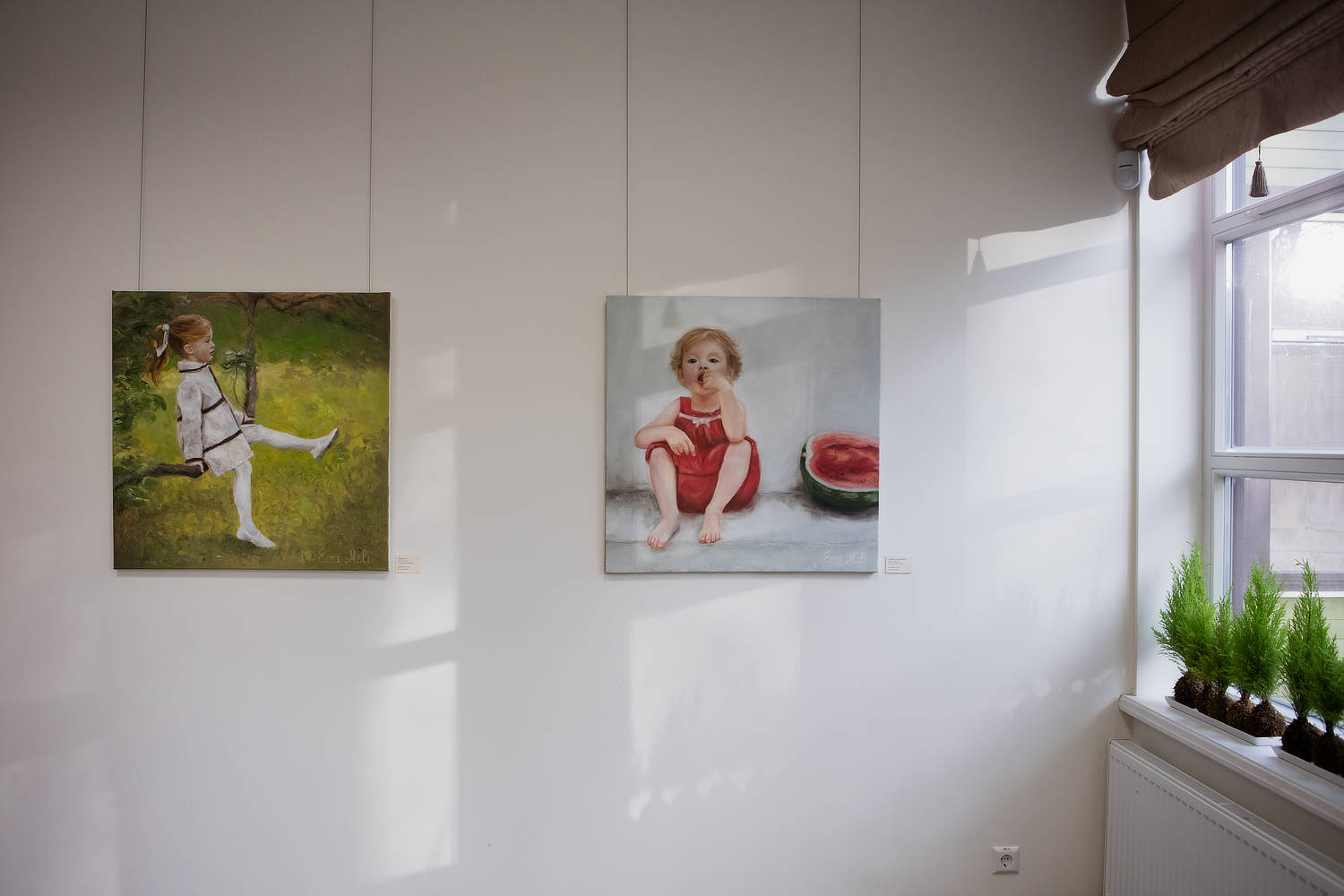 Birštono Kurhauzas
Birštono Kurhauzas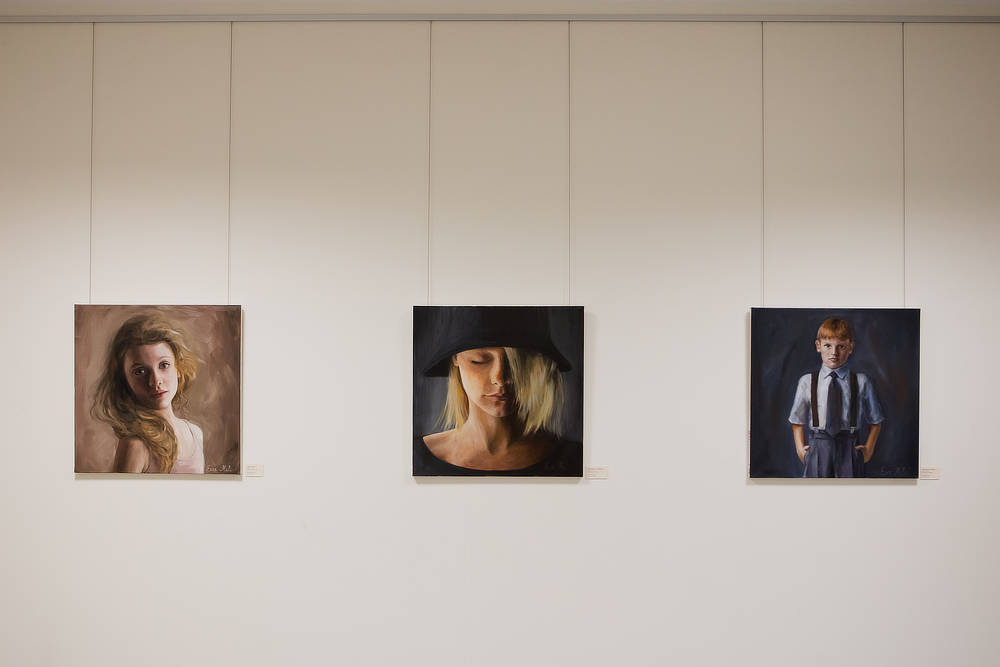 Birštono Kurhauzas
Birštono Kurhauzas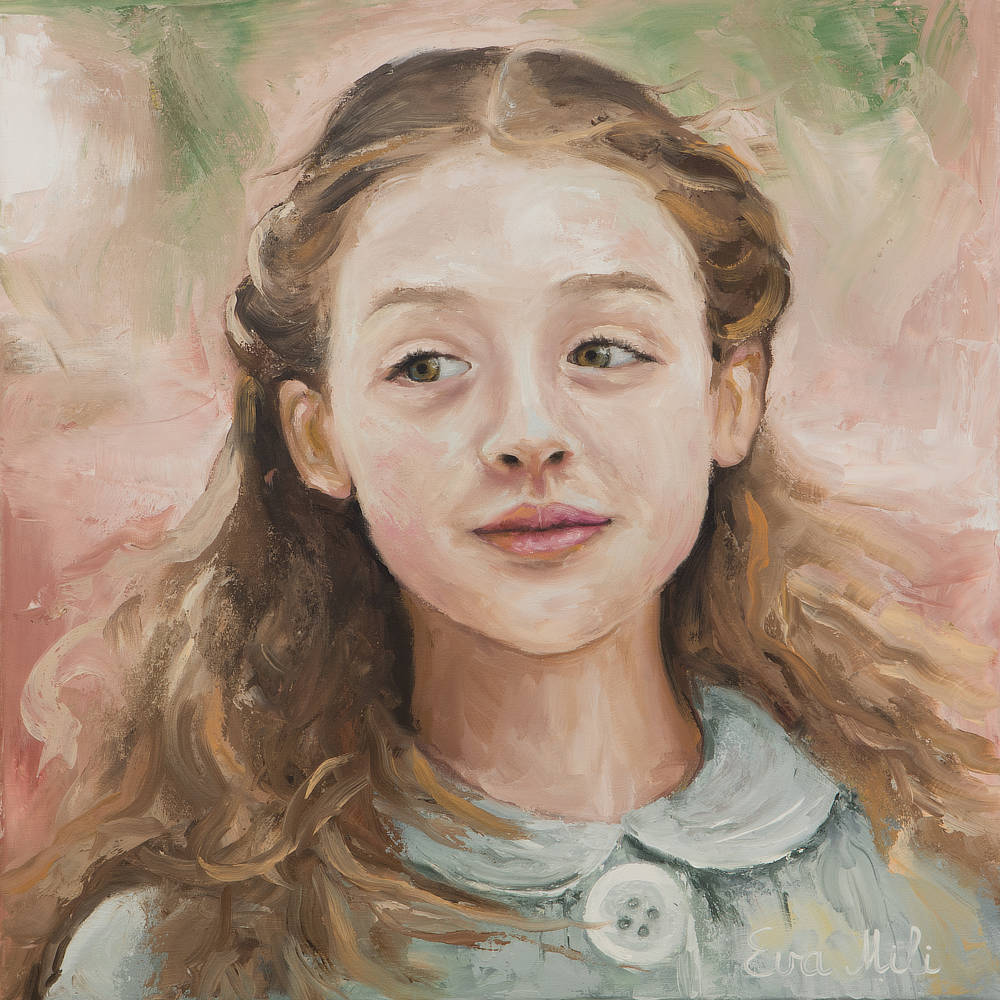 “Kai šypsosi akys”
“Kai šypsosi akys”60x60cm
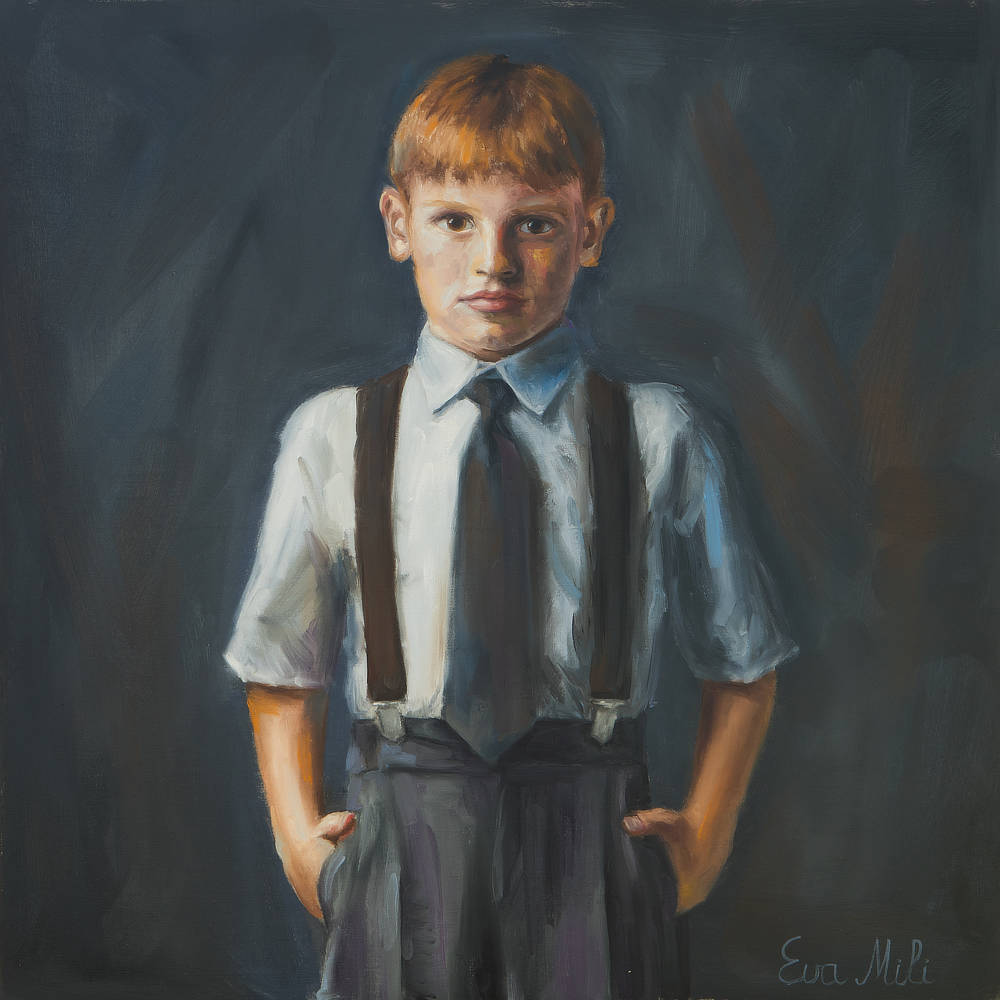 “Augusto portretas”
“Augusto portretas”70x70cm
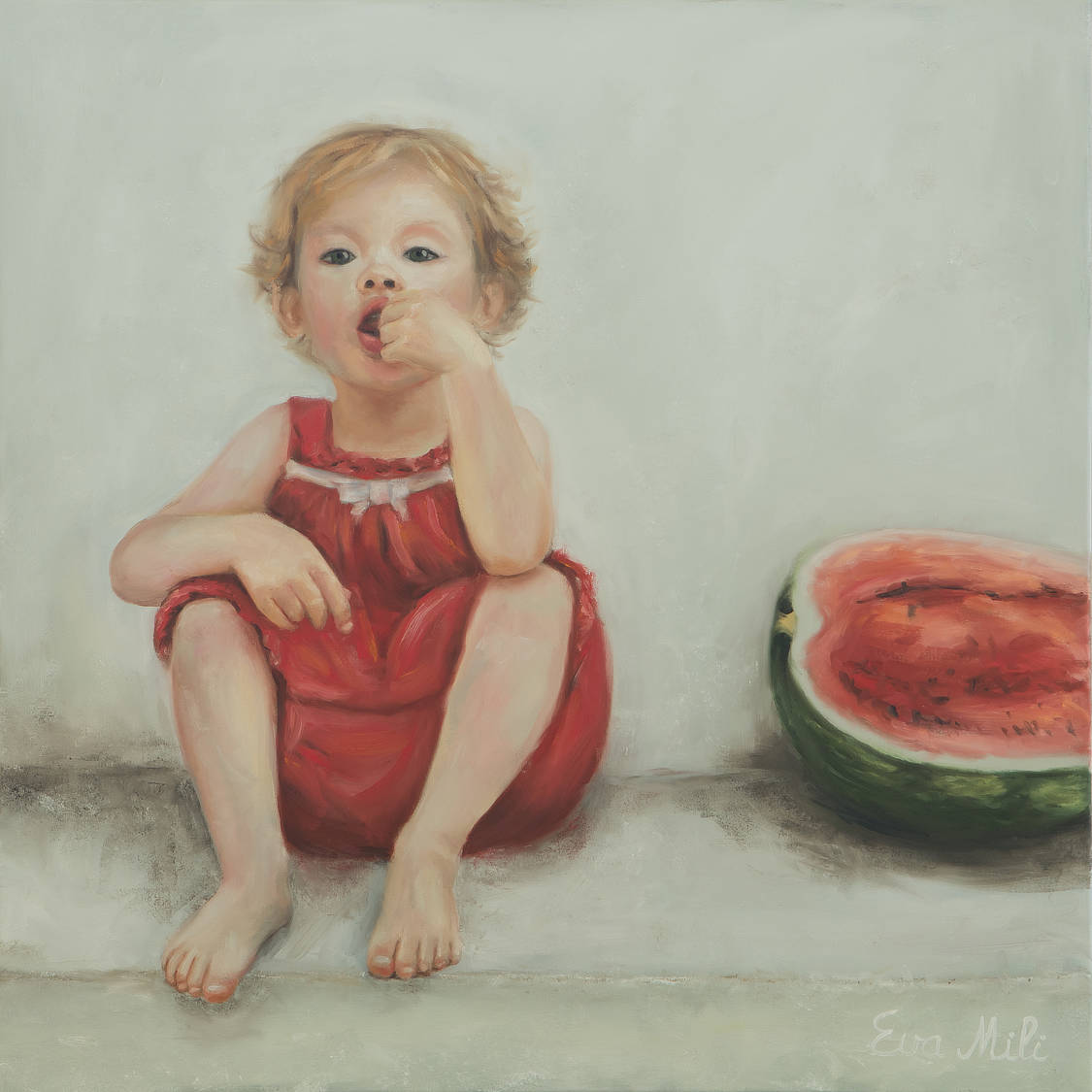 “Arbūzo savininkė”
“Arbūzo savininkė”80x80cm
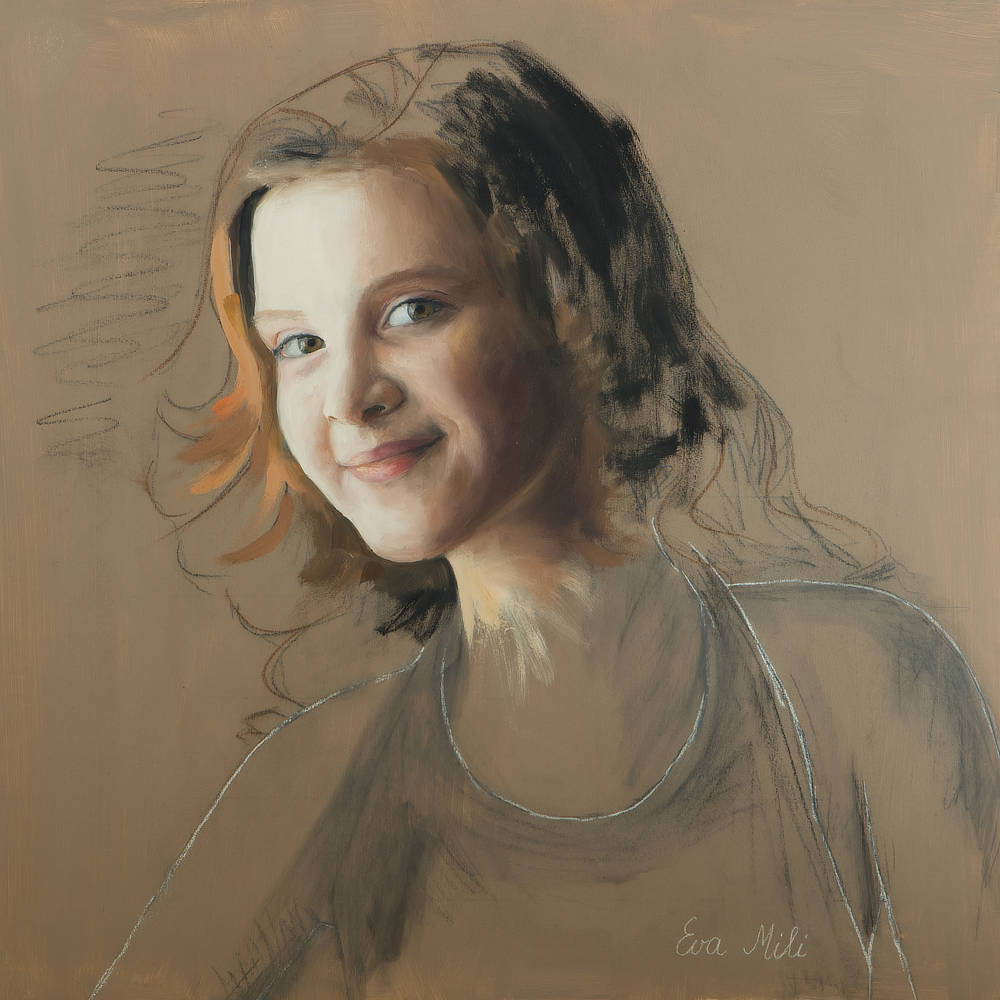 “Rugilė”
“Rugilė”70x70cm
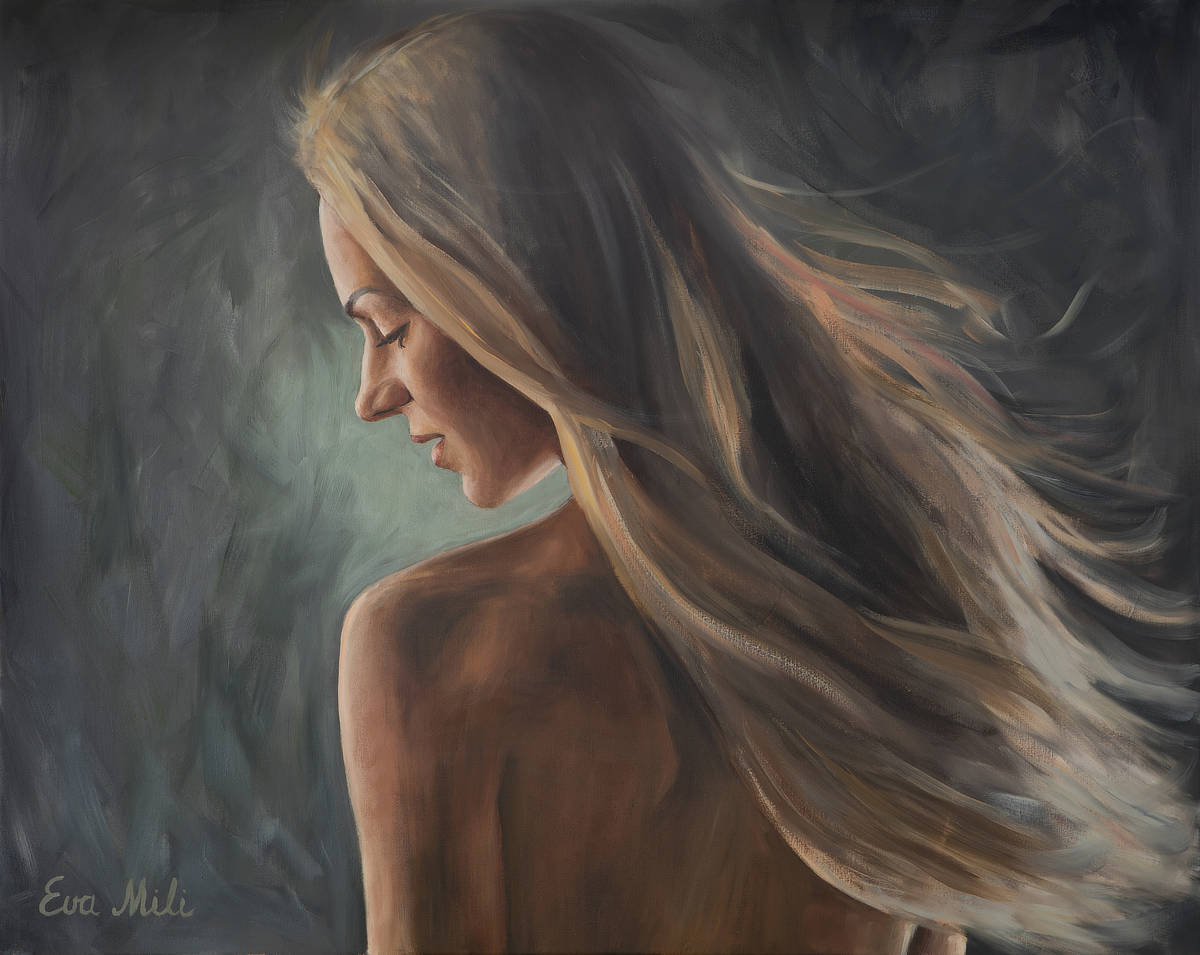 “Mergina ilgais plaukais”
“Mergina ilgais plaukais”100x80cm
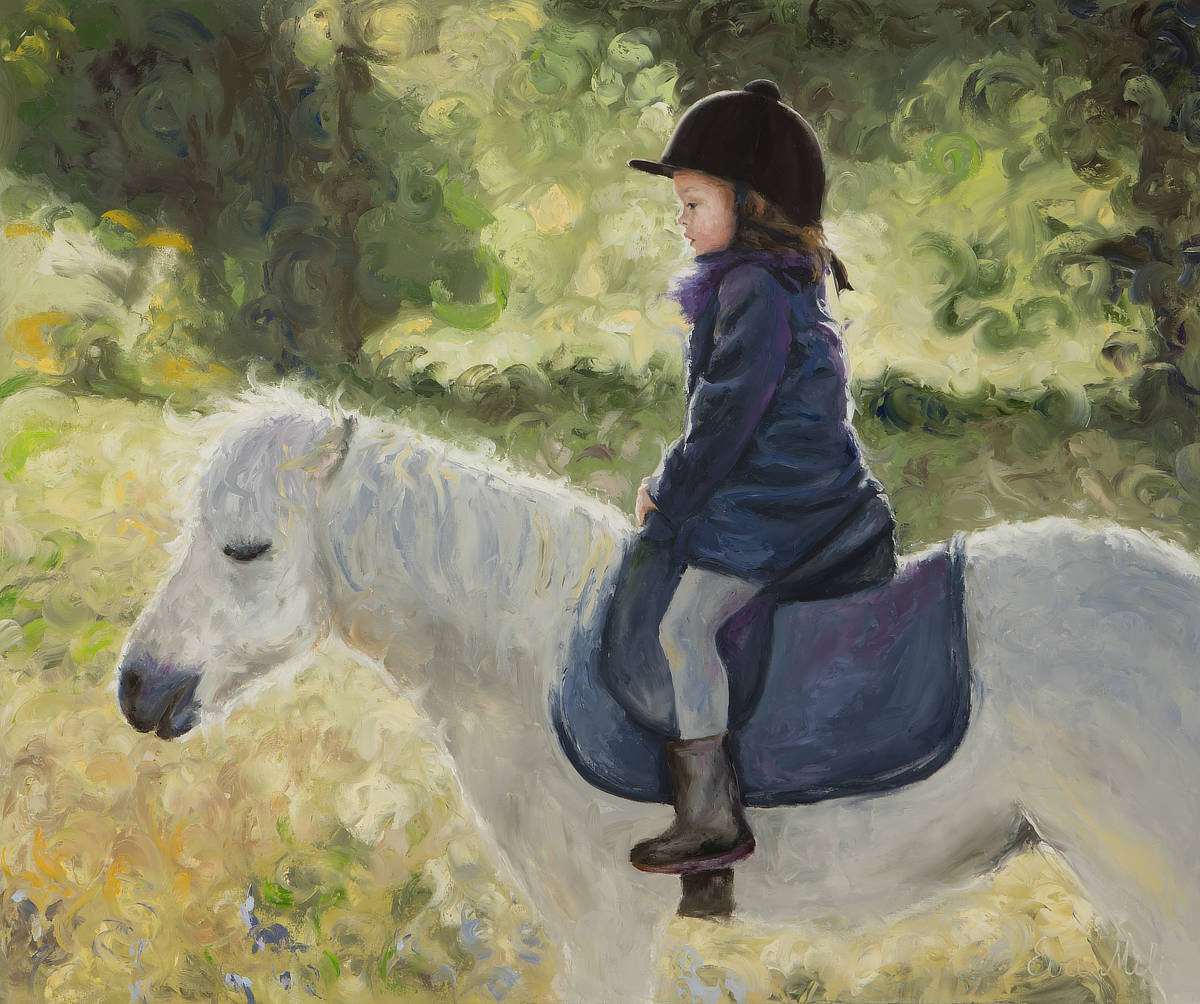 “Raitelė miško pievelėje”
“Raitelė miško pievelėje”120x100cm